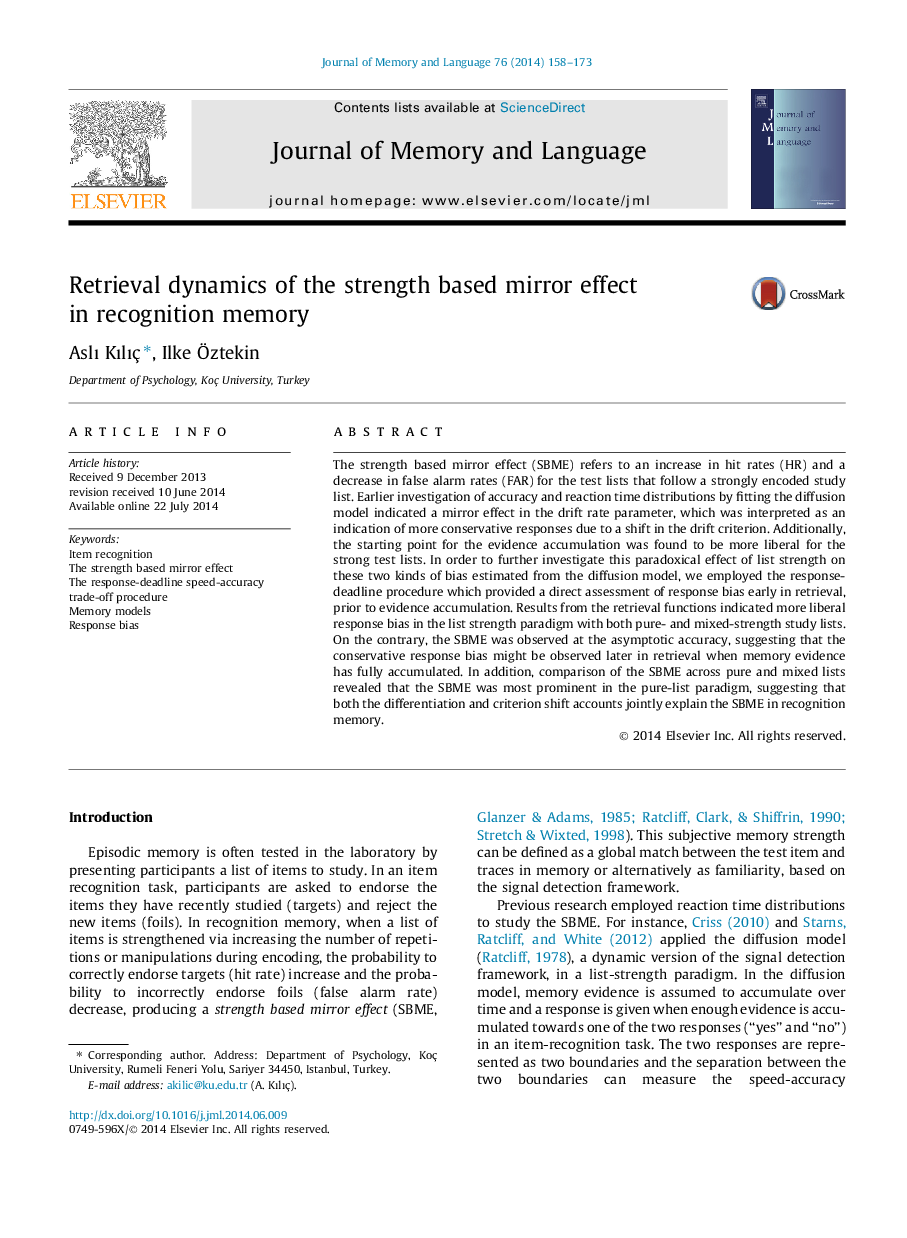ترجمه فارسی عنوان مقاله
پویایی بازیابی اثر آینه ای مبتنی بر قدرت در حافظه شناخت
عنوان انگلیسی
Retrieval dynamics of the strength based mirror effect in recognition memory
| کد مقاله | سال انتشار | تعداد صفحات مقاله انگلیسی |
|---|---|---|
| 71196 | 2014 | 16 صفحه PDF |
منبع

Publisher : Elsevier - Science Direct (الزویر - ساینس دایرکت)
Journal : Journal of Memory and Language, Volume 76, October 2014, Pages 158–173
ترجمه کلمات کلیدی
شناخت مورد؛ اثر آینه مبتنی بر قدرت ؛ مدل های حافظه - سوگیری پاسخ
کلمات کلیدی انگلیسی
Item recognition; The strength based mirror effect; The response-deadline speed-accuracy trade-off procedure; Memory models; Response bias

